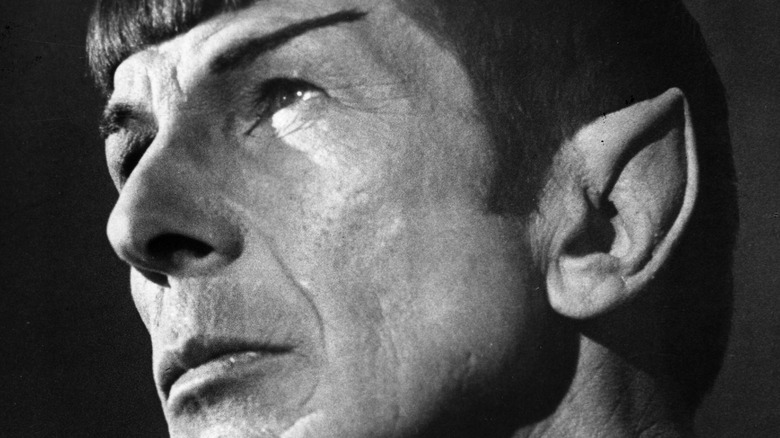The Improvised Spock Moment That Shaped The Future Of Star Trek
Sometimes an unshakable part of modern mythology isn't developed over time in a writer's imagination, but in an on-the-fly improvisation that sends ripples through decades of stories to follow. That's a particularly strong possibility when you're dealing with something like "Star Trek." It began as a relatively humble TV show in the 1960s but has gone on to spawn countless other TV series, films, books, video games, and so on, all of which together form the massive tapestry known as the "Star Trek" canon.
Given that, it can be hard to imagine that one of the most familiar aspects of the "Star Trek" mythos came about as the result of an improvised moment between Leonard Nimoy and William Shatner on the original "Star Trek" series. But according to a bit of "Star Trek" production lore, that is precisely what happened way back when the 1966 "Star Trek" episode "The Enemy Within" was being filmed.
Leonard Nimoy allegedly came up with the Vulcan nerve pinch himself
In case you need a refresher, "The Enemy Within" is about Captain Kirk (William Shatner) being split into two distinct duplicates after a transporter mishap. One is morally good, and the other is morally bad. At one point in the episode, Spock (Leonard Nimoy) subdues the evil Kirk with what would go on to become one of his signature abilities: the Vulcan nerve pinch.
A 2013 article on the official "Star Trek" site lays out what they refer to as a "well documented" bit of Trekkie trivia, which is that the nerve pinch wasn't included in the episode's original script. Originally, Spock was supposed to knock out the bad Kirk with the much more conventional method of hitting him over the head. As legend has it, though, Nimoy considered this out of character for Spock, someone known for his intelligence and finesse. So, he and Shatner collaborated on an alternate approach, which ended up being Spock subduing the evil Kirk with a simple touch of the neck.
After the initial use of the Vulcan nerve pinch, it became a more and more established part of "Star Trek" lore, and now it's familiar even to non-fans of the series just by sheer cultural osmosis. And it all came from an insightful bit of onscreen improvisation.

